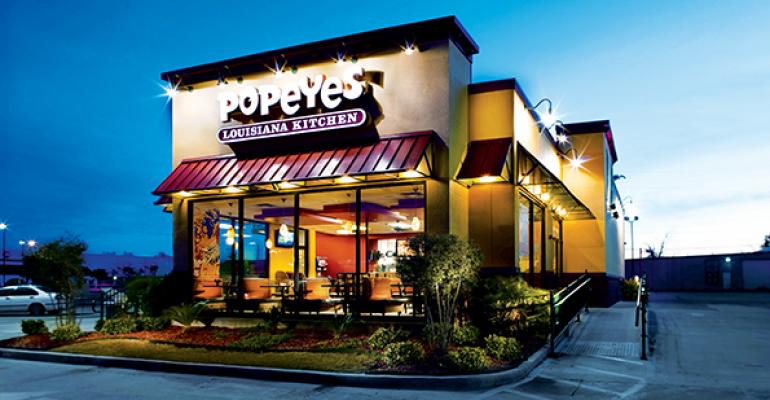 This post is part of the On the Margin blog.
This post is part of the On the Margin blog.
Prices for restaurant companies keep increasing. Popeyes Louisiana Kitchen and Panera Bread, among other brands, were acquired for multiples once thought to be unheard of in the big chain world.
But the multiple expansion of recent years could be coming to an end, at least in the views of one firm.
“We’re almost at peak,” said Bahige El-Rayes, principal in the consumer and retail practice at the consulting firm A.T. Kearney.
Multiples for restaurant companies are crazy. Multiples for large restaurant companies in 2016 averaged 15.5 times earnings before interest, taxes, depreciation and amortization, or EBITDA.
Smaller deals are getting a more modest, 13.3 times EBITDA on average, meaning that buyers are paying heavily for the safety of a large company.
Both numbers, however, are down from where they were in 2015, when both large and smaller deals averaged 15.7 multiples. Still, the size of large-scale deals so far in 2017 — Panera and Popeyes both went for enormous prices — suggests the pricing levels remain elevated.
Pricing levels for restaurant acquisitions are important because they fuel much of the activity in the industry. A multiple of 15, for instance, means a buyer would require 15 years to pay off the acquisition at existing earnings levels.
Those kind of prices put pressure on buyers to expand, even if they plan on keeping their acquisitions for many years — which is certainly the case in both the Panera and Popeyes deals, where buyers JAB Holding Co. and Restaurant Brands International Inc. have no plans on flipping them in five years like traditional private equity buyers.
It also pushes buyers to look for other deals. And as we reported earlier this month, private-equity groups that are reticent to pay multiples of 15 for companies have been looking “down market” at smaller concepts they can grow.
Not surprisingly, there were more down market deals for upstart restaurant chains than during any year since the recession — and probably ever.
There are two huge reasons multiples for restaurants have expanded even amid concerns over sales.
First, the Internet has hammered consumer companies, particularly retailers, as companies like Amazon.com draw business. So there’s a sense of safety in the restaurant world. People always have to eat, after all.
Second, there’s a major sense among investors that the restaurant industry is evolving, paving the way for newer types of concepts. But companies can also find expansion opportunities overseas, which provides opportunities for growth, even though the U.S. market is filled with restaurants.
One other factor, at least at the chain level, has been the presence of strategic buyers, which tend to pay higher prices than are private equity and other financial buyers.
Indeed, financial buyers are “having a hard time, especially with megadeals,” El-Rayes said. “They’re getting priced out.”
But, he said, expect private-equity groups to make a comeback. These firms should get more financing and more interest in making deals. And that could keep the deal flow moving in the coming years.
Jonathan Maze, Nation’s Restaurant News senior financial editor, does not directly own stock or interest in a restaurant company.
Contact Jonathan Maze at [email protected]
Follow him on Twitter: @jonathanmaze





